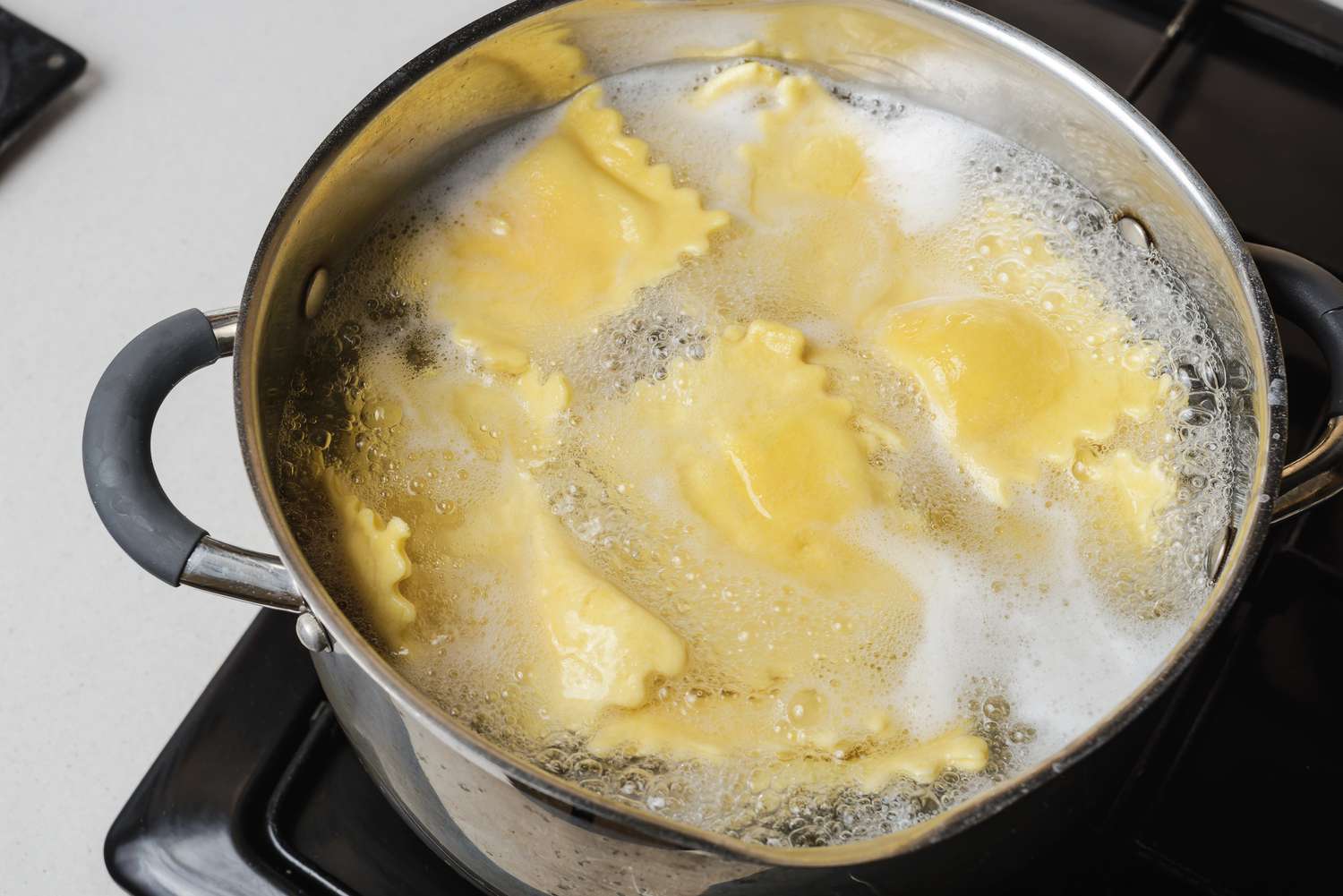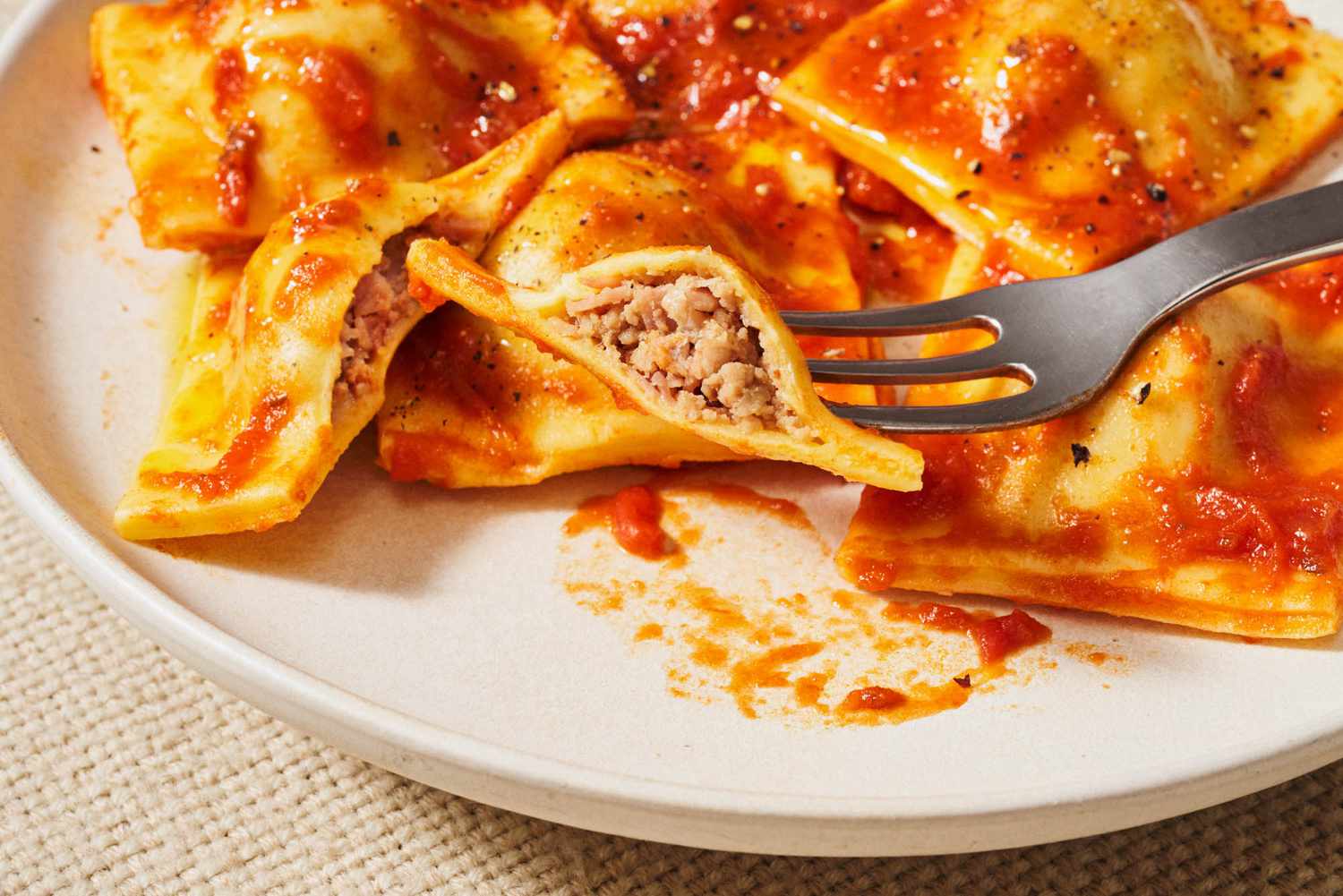How to Know When Ravioli Is Done: A Comprehensive Guide
Ravioli, a delicious Italian dish, has been a favorite among food enthusiasts for centuries. This stuffed pasta brings together a combination of flavors and textures that make it truly irresistible. However, one common challenge faced by both home cooks and professionals alike is determining when ravioli is perfectly cooked. In this guide, we will explore various methods and indicators to help you know when your ravioli is done, ensuring a delightful dining experience.
I. The Visual Clues:
When cooking ravioli, visual cues can provide valuable insights into its doneness. Pay attention to the following indicators:
1. Floating: Fresh or frozen ravioli typically floats to the surface when it's cooked. As the pasta cooks, it becomes buoyant and rises to the top of the boiling water. Once you notice the ravioli floating, it's a good indication that they are almost done.

Floating Ravioli
2. Translucent Appearance: Another visual cue to look for is a translucent appearance. When ravioli is cooked, the pasta becomes more transparent, allowing you to see the filling inside. Keep an eye on the edges, which should be soft and tender.
II. The Texture Test:
The texture of ravioli can provide important clues about its doneness. Here's what to observe:
1. Al Dente: For many pasta dishes, including ravioli, the ideal texture is "al dente," meaning the pasta is cooked but still retains a slight firmness when bitten. To test for this, remove a single ravioli from the boiling water and carefully take a bite. It should have a slight resistance in the center while being tender on the outer layers.
2. Filling Texture: In addition to the pasta itself, the filling plays a significant role. Depending on the ingredients used, the filling should be cooked through, creamy, and evenly heated. Take a small bite to assess the filling's texture and ensure it is thoroughly cooked.
III. Cooking Time and Temperature:
Understanding the cooking time and temperature is crucial for perfectly cooked ravioli. Consider the following aspects:
1. Follow Package Instructions: If you are using store-bought ravioli, refer to the package instructions for cooking time and temperature. The manufacturer's guidelines are tailored to achieve optimal results for their specific product.
2. Homemade Ravioli: When making homemade ravioli, cooking time can vary depending on the thickness of the pasta and the type of filling. In general, fresh ravioli takes around 2-3 minutes to cook, while frozen ones may require an additional minute or two.

Homemade Ravioli
3. Gentle Boiling: Maintain a gentle boil when cooking ravioli. Rapid boiling can cause the pasta to break apart or the filling to spill out, resulting in an unevenly cooked dish.
IV. Taste Testing:
The most reliable way to determine if your ravioli is done is by tasting it. Here's how to perform a taste test:
1. Sample a Ravioli: Using a slotted spoon or tongs, remove a single ravioli from the boiling water. Allow it to cool slightly before taking a small bite to check the texture and doneness.
2. Taste the Filling: Apart from the pasta, the filling's taste is equally important. Ensure that the flavors are well-developed and that any meat or vegetables are cooked to perfection.

Taste the Filling
V. Safety Considerations:
While assessing the doneness of ravioli, it's essential to prioritize food safety. Keep the following points in mind:
1. Internal Temperature: If you have concerns about the filling's doneness, use a food thermometer to measure itsinternal temperature. The USDA recommends a minimum internal temperature of 165°F (74°C) for meats and poultry fillings to ensure they are safe to consume.
2. Cross-Contamination: To avoid cross-contamination, make sure to use separate utensils and cutting boards for raw and cooked ravioli. This will prevent any potential bacteria from spreading and causing foodborne illnesses.
VI. Conclusion:
Mastering the art of cooking ravioli to perfection requires a combination of visual cues, texture assessment, cooking time and temperature, taste testing, and food safety considerations.
By following these guidelines, you'll be able to confidently determine when your ravioli is done and serve a delicious, satisfying meal to your family and friends. Enjoy the wonderful flavors and textures of perfectly cooked ravioli!